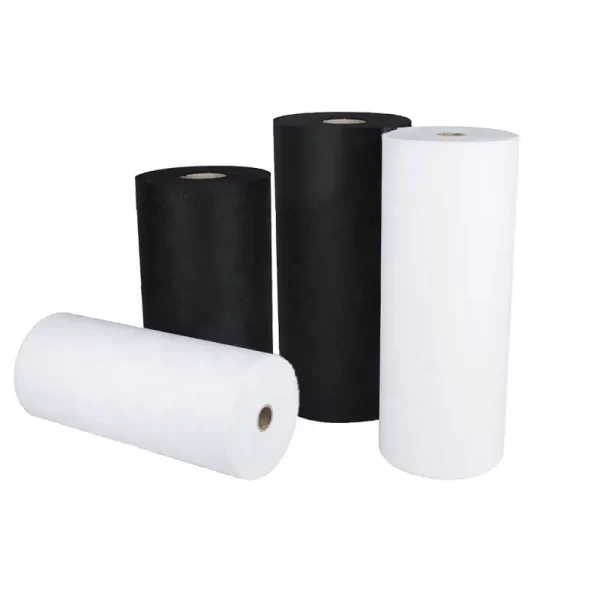What Are Examples of Non-woven Fabrics?
Before diving into the wealth of applications for nonwoven fabrics, it’s essential to understand what sets them apart from traditional textiles. Unlike woven or knitted fabrics, where yarns are interlaced or looped together, nonwoven fabrics are produced directly from fibers. These fibers are bonded together through various methods, including mechanical entanglement, heat, or adhesives, to form a cohesive fabric structure. The result is a cost-effective, versatile, and customizable material with myriad uses across different industries.
Medical Applications of Nonwoven Fabrics: A Closer Look
In the medical field, nonwoven fabrics play an instrumental role in ensuring safety, hygiene, and patient comfort. Let’s dive deeper into their applications:
Surgical Gowns and Drapes: These essential protective garments, made from nonwoven materials, offer excellent liquid repellency, reducing the risk of microbial transfer. Moreover, these fabrics provide a barrier to particles, maintaining the sterile field during surgical procedures.
Face Masks: Nonwoven polypropylene (PP), particularly melt-blown PP, has become the material of choice for face masks. Its excellent filtration capabilities provide a barrier against airborne particles, offering critical protection in controlling the spread of infectious diseases.
Wound Dressings and Bandages: The superior absorbency, softness, and breathability of nonwoven fabrics make them ideal for wound dressings. They help facilitate wound healing while providing comfort to the patient.
Nonwoven Fabrics in the Realm of Geotextiles
Geotextiles, often made from nonwoven polyester or polypropylene, have revolutionized civil engineering. These fabrics are robust, durable, and have high puncture resistance, making them ideal for stabilizing soil and preventing erosion in road construction, embankments, and landfills. The fabrics also exhibit excellent water flow rates, making them crucial for drainage systems.
Nonwoven Fabrics Driving the Automotive Industry
Nonwoven fabrics are not only present in the visible parts of a vehicle like headliners, seat covers, and trunk liners but also hidden away in air and oil filters, sound insulation materials, and even under-the-hood components. Their ability to reduce overall vehicle weight while enhancing comfort, safety, and aesthetics is driving their increased adoption in the automotive industry.
Hygiene Applications of Nonwoven Fabrics
Nonwovens have transformed the hygiene sector with their high absorbency, softness, and comfort.
Baby Diapers and Adult Incontinence Products: The core of these products consists of nonwoven materials that quickly absorb and lock away liquid, keeping the user dry and comfortable.
Feminine Hygiene Products: Nonwovens used in sanitary napkins and pantyliners provide superior comfort, absorbency, and breathability. These fabrics often undergo additional treatment to imbue them with antibacterial properties, further enhancing their safety.
The Role of Nonwoven Fabrics in Home Furnishing
Nonwoven fabrics have proven to be a game-changer in the home furnishing sector, thanks to their design flexibility, durability, and cost-effectiveness.
Carpet Backing and Upholstery Padding: Nonwoven fabrics lend structure, durability, and comfort to carpets and upholstery.
Curtains, Tablecloths, and Wallpapers: Nonwovens can be printed, embossed, or dyed to create decorative items with appealing designs. Their ease of maintenance and affordability make them a popular choice in modern homes.
Nonwoven Fabrics in Agriculture: Feeding the Future
Nonwoven fabrics serve a multitude of purposes in the agricultural sector. They function as crop covers, protecting plants from harsh weather, pests, and diseases while ensuring permeability for light, air, and water. Nonwoven mulch films assist in weed control, maintain soil moisture, and regulate temperature, supporting optimal plant growth.
Packaging Applications: Safeguarding Products with Nonwoven Fabrics
In the packaging industry, nonwovens are heralded for their strength, durability, printability, and in some cases, biodegradability. Nonwovens are utilized in various packaging types, from tea and coffee bags to shopping bags and protective packaging materials for fragile items.
Conclusion
In a nutshell, nonwoven fabrics have carved out a niche for themselves across multiple industries. Their versatility, cost-effectiveness, and performance attributes make them the material of choice for numerous applications. As technological advancements continue to push the boundaries of nonwoven fabric production, their potential applications are sure to expand, further underscoring their importance in our lives. Indeed, nonwoven fabrics exemplify the exciting possibilities at the intersection of technology, innovation, and everyday utility.
Please visit our website for more product details https://medposnonwoven.com/product-category/non-woven-fabrics/

